Minka Floor Plan
Some bonus information about the floor plan of a traditional Japanese house featured in the essay "Rediscovering Japan’s Irori".
PART 1 | PART 2 | PART 3 | PART 4 | PART 5 | PART 6 | APPENDIX
The essay Rediscovering Japan’s Irori (Part 2) featured this floor plan:

Minka actually had a variety of floor plans. This is a basic example to clarify where irori were generally located in the house.
It is a simplified floor plan of the Kitamura House (旧北村家) at the Japan Open-Air Folk House Museum (日本民家園) in Kanagawa Prefecture. It is difficult to visualize a three-dimensional space from a floor plan, so here are some photos:
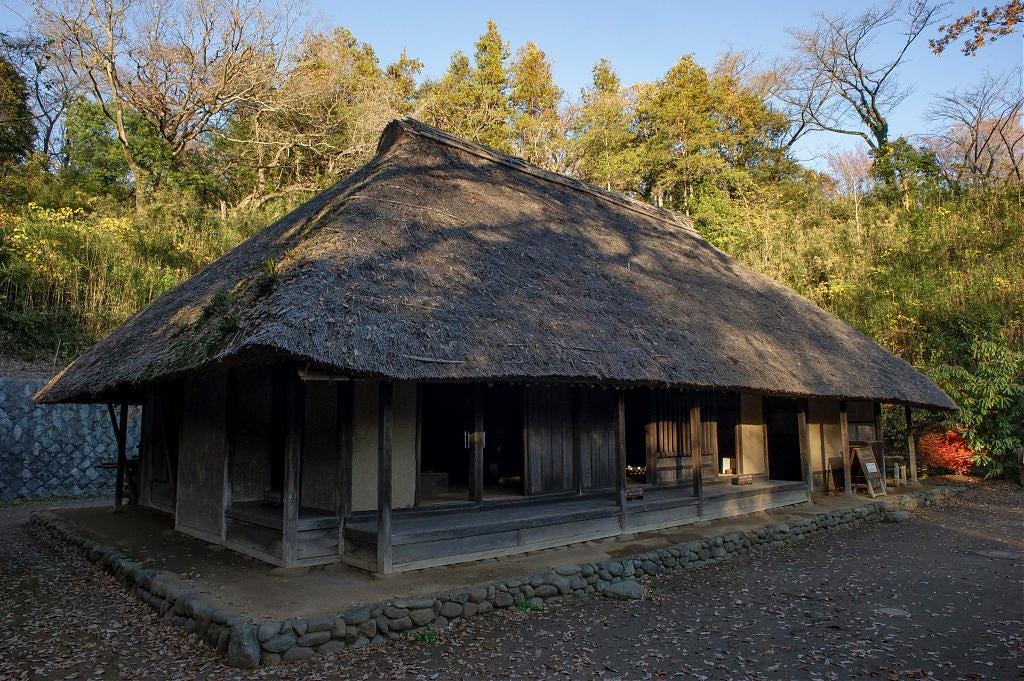
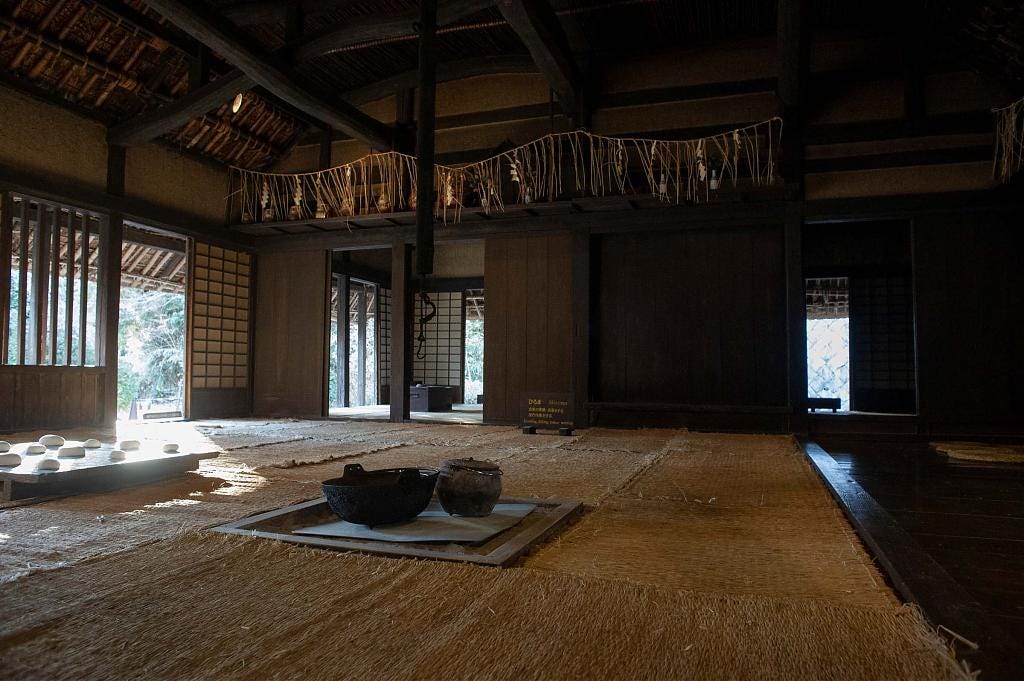
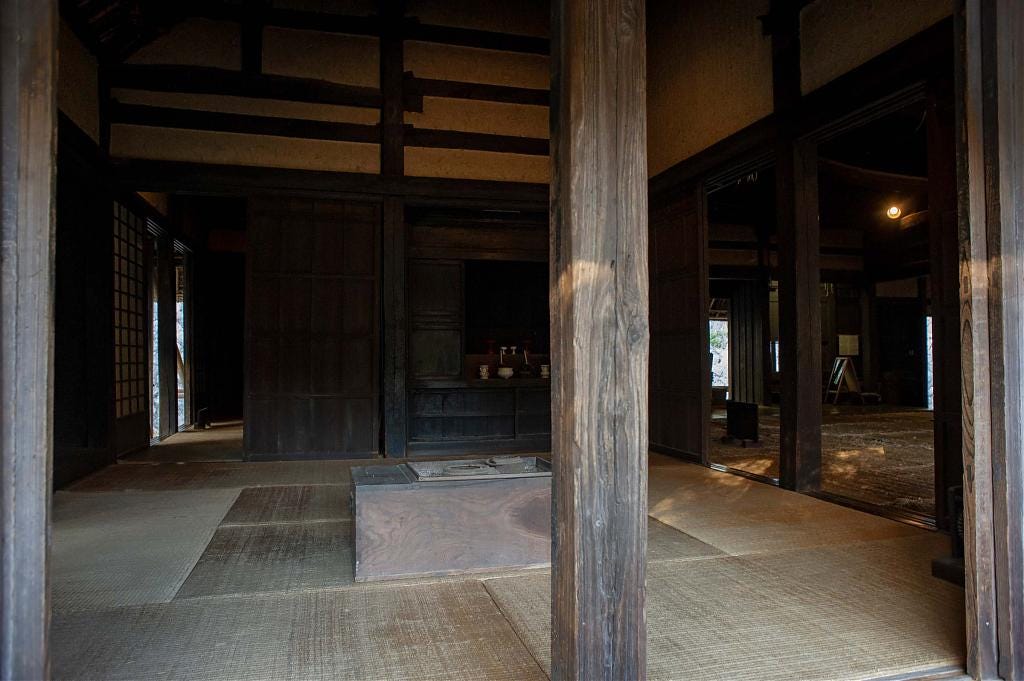
The Kitamura House was built in 1687 (Jōkyō 4) and is considered to be one of the most important minka in Japan. It originally stood in Hadano City in Kanagawa Prefecture but was moved to the museum in the 1960s.
The Japan Open-Air Folk House Museum features three more minka with similar floor plans to the Kitamura House. All were located in Kanagawa Prefecture. Below are the museum’s introductions—with floor plans—to all four.
You will have noticed that the museum uses a few different names for the same rooms, and even different spellings (dee, dei, dē). The names actually differ per region and sometimes even per family. This is true for the term irori as well, which differed nationwide. In the essays about irori I have used the terms that are most commonly encountered in present-day Japan.
The floor plan of the Kitamura House is often used in Japanese introductions to minka. It is simple to understand and shows the most important rooms that can be found at minka. Many minka had a similar hiroma layout, like the hiroma of the nearby Kiyomiya House:
Japan had an amazing variety of minka floor plans. To get an idea of how much minka differed per region, watch this wonderful (Japanese language) documentary about minka from 1962 (Showa 37). The end scene was briefly introduced in Staying Warm in Cold Japan.
If you find this interesting and would like to know more about minka architecture, here are a few of the sources that I consulted for the essays about irori. The first three are especially lavishly illustrated and are a joy to even just browse through.
Japanese Homes and Their Surroundings, 1895
By Edward S. Morse / Harper & Brothers
The first English language study of traditional Japanese architecture. It deals with every aspect of the traditional Japanese home, from major structural features to candlesticks. There are many modern publications of this classic book.
The Japanese House: A Tradition for Contemporary Architecture, 1964
By Heinrich Engel / Charles E. Tuttle Company
Possibly the most detailed English language book ever written about traditional Japanese architecture. Includes construction materials and methods, and the cultural philosophy, aesthetics, and uses that govern the architecture. A bit hard to find, but a treasure.
Minka: Traditional Houses of Rural Japan, 1986
By Chūji Kawashima / Kodansha USA Inc.
Briefly traces the history of Japan’s traditional farmhouses, shows a variety of regional styles, and looks at the structure, layout and construction.
The Japanese House: In Space, Memory, and Language, 2005
By Takeshi Nakagawa / International House of Japan
Architectural historian Takeshi Nakagawa introduces the history of traditional Japanese architecture in twenty-five essays organized by topic, such as The Earthen Floor, The Entrance Sill, The Shoe-Removing Stone, etc. A joy to read.
Other
The Japan Open-Air Folk House Museum has an English Guide Book introducing the minka in the museum. It can be ordered from the museum’s website. If you haven’t yet, visiting the museum is definitely worth it. The minka are beautiful and there is a well-documented small indoor museum.
Additionally, Azby Brown has written excellent books on Japanese architecture, design, and carpentry with beautiful illustrations drawn by Azby himself. Highly recommended!
Hi, I am Kjeld Duits and I created Old Photos of Japan.
Old Photos of Japan aims to be your personal museum for daily life in old Japan. I track down and acquire rare vintage prints and research and conserve them.
If you value or enjoy this work, please help support it:





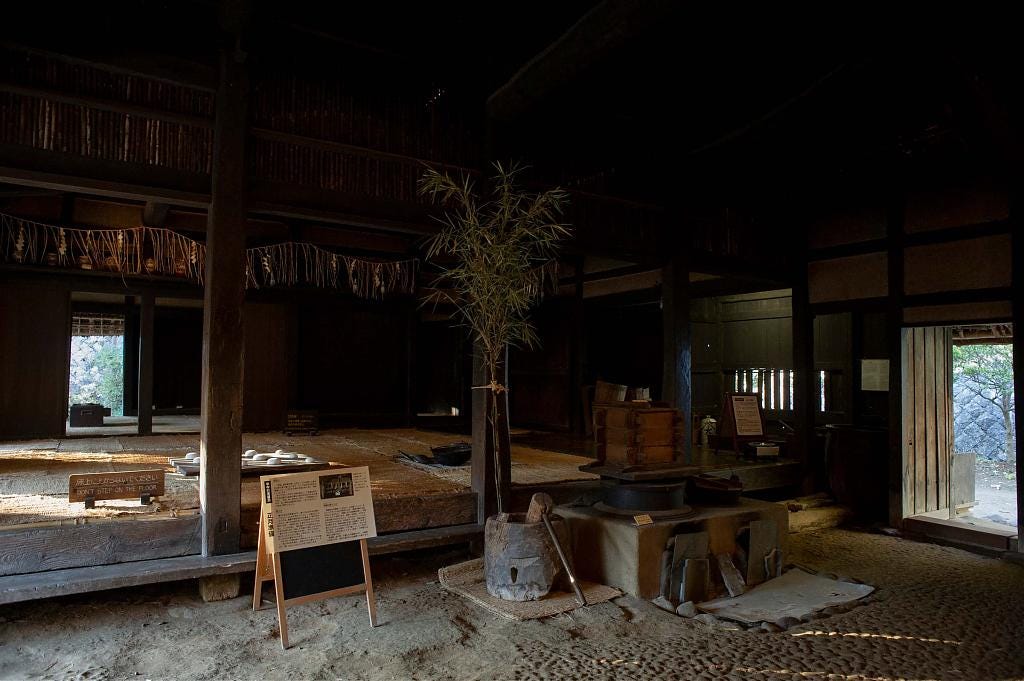
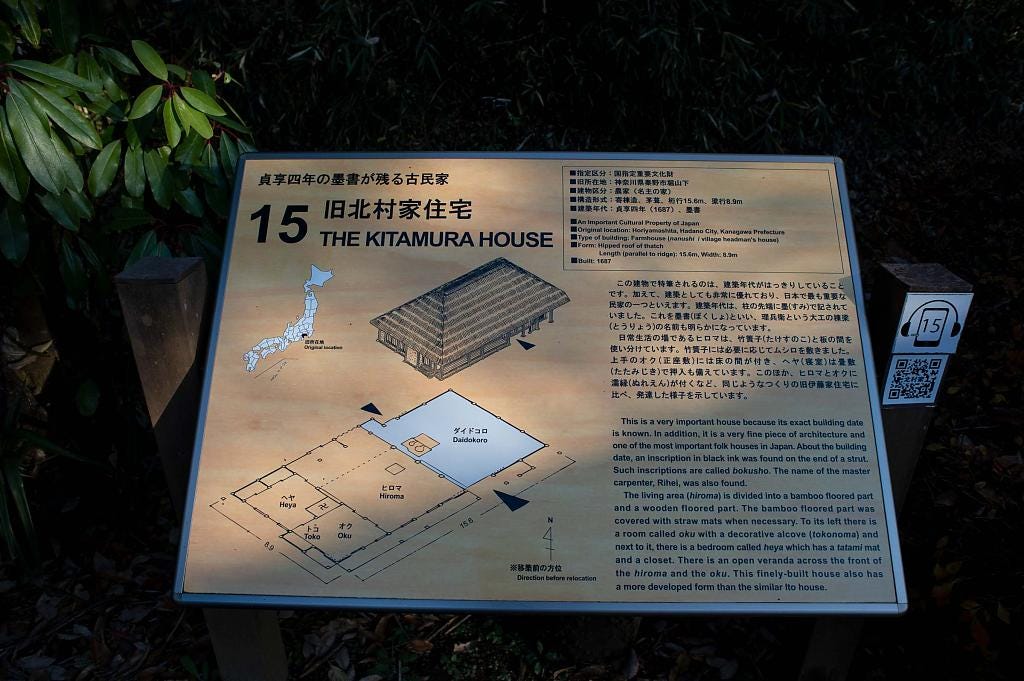

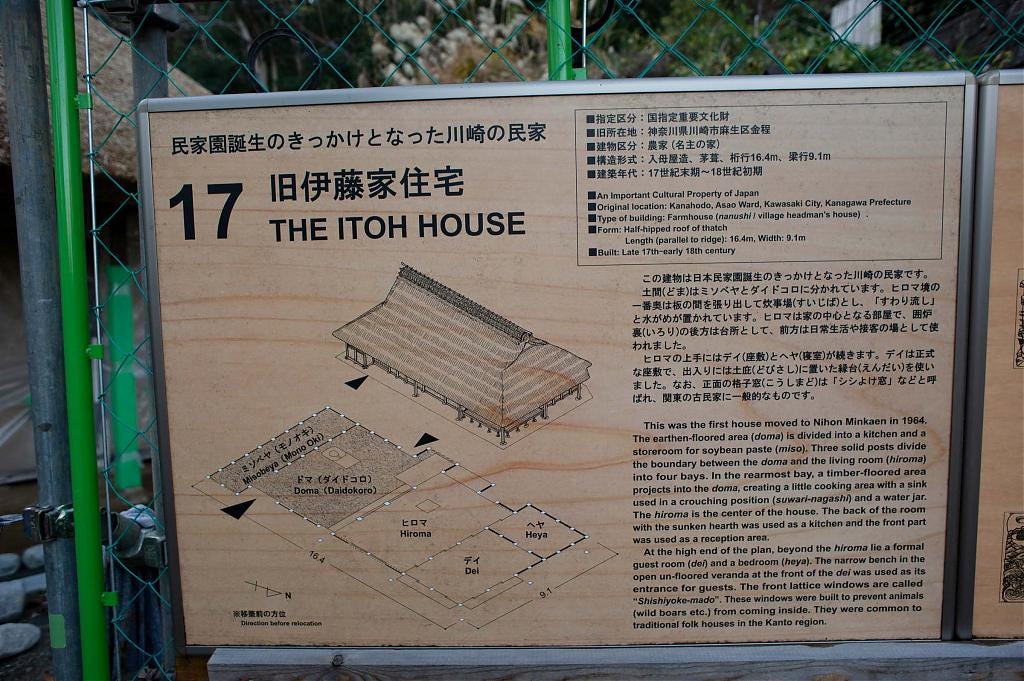
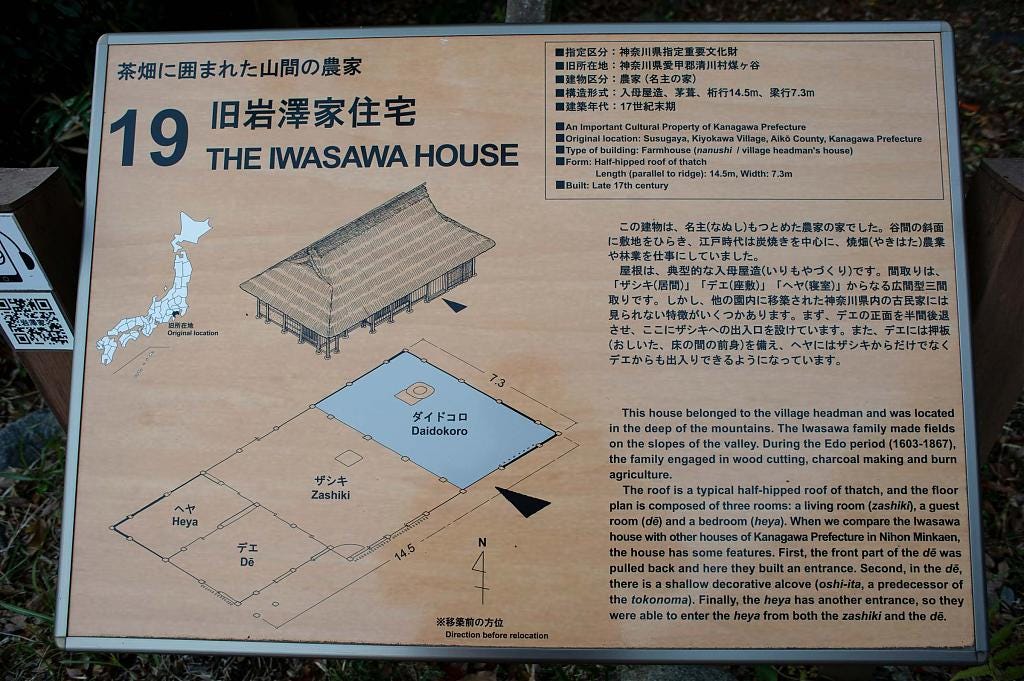
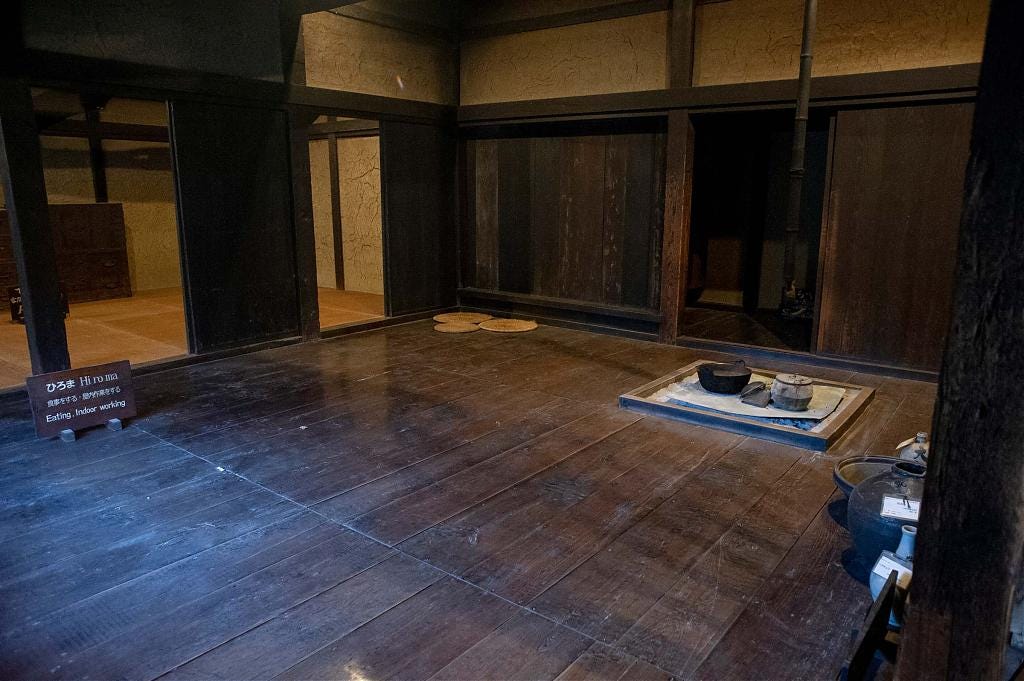

I am definitely putting the open air Japanese house museum on my must visit list for the next trip. There is an old farmhouse that was moved to the Yokohama Sankeien gardens that has a similar layout and has remnants of sericulture work too. I love visiting these old buildings and imagining the past.
This is so interesting! Thank you so much for all your research.